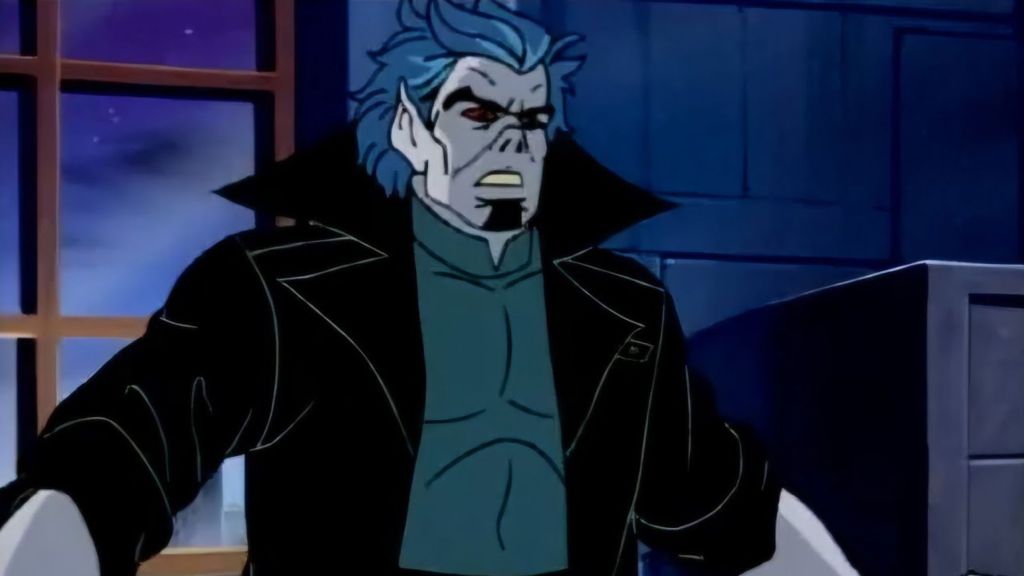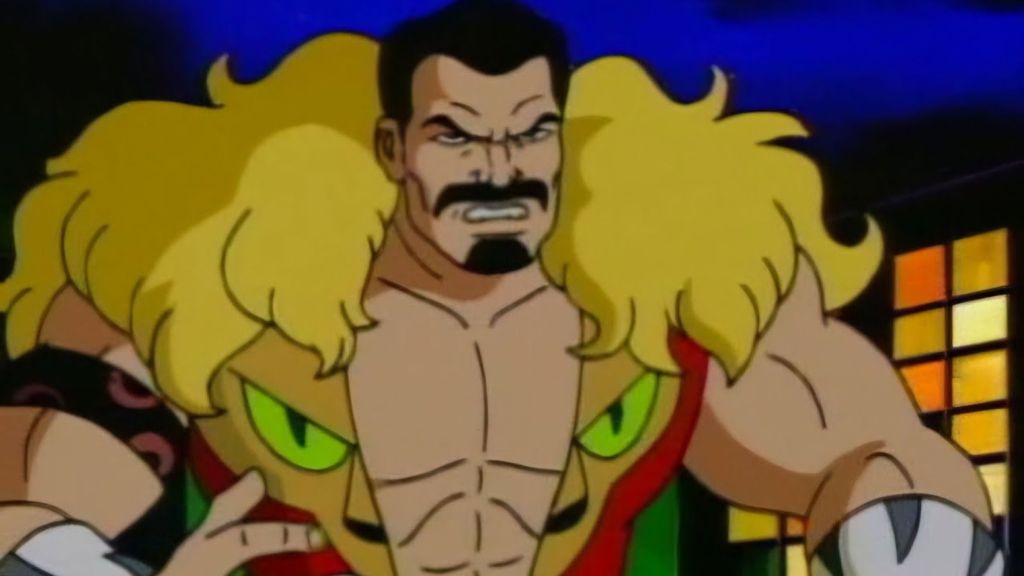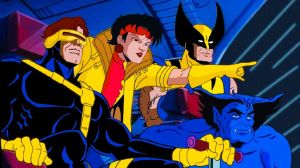Spider-Man: The Animated Series stands as a defining piece of superhero media, a benchmark against which many subsequent animated adventures are measured. Premiering in 1994, the series captured the hearts of a generation with its serialized storytelling, mature themes, and deep respect for its comic book source material. It took the world of Peter Parker (voiced by Christopher Daniel Barnes) seriously, exploring the personal sacrifices and emotional weight of his double life with a nuance rarely seen in children’s programming. As a result, the show successfully translated the sprawling history of the comics into season-long arcs that made every episode feel essential.
Videos by ComicBook.com
A significant part of Spider-Man: The Animated Series‘ lasting impact derives from its handling of the wider cast of characters. The creative team demonstrated a keen understanding of what made these heroes and villains tick, and they were not afraid to make bold changes to elevate them. By focusing on the narrative potential of each character, the show created versions that were not only faithful in spirit but often surpassed their comic book counterparts in complexity and memorability, sometimes even influencing the larger canon.
7) Alistair Smythe

In the comics, Alistair Smythe is driven by a straightforward quest for vengeance. After his father, Spencer Smythe, dies while trying to eliminate Spider-Man with his robotic Spider-Slayers, Alistair inherits both the technology and the single-minded obsession. Consequently, his story is one of escalating hatred, culminating in him encasing his own body in a biomechanical suit to become the Ultimate Spider-Slayer, a physical match for his nemesis.
Spider-Man: The Animated Series transforms this simple revenge plot into a genuine tragedy. Here, the wheelchair-bound Alistair (voiced by Maxwell Caulfield) is manipulated by the Kingpin (voiced by Roscoe Lee Browne), who preys on his grief to coerce him into building a new generation of Spider-Slayers. After repeated failures, Kingpin callously has Alistair forcibly mutated into a cyborg weapon. This version of Alistair Smythe is therefore not just a villain but also a victim, a pawn in a much larger game. His arc becomes about reclaiming his own agency from the men who exploited his pain, adding a layer of emotional depth that makes him a far more compelling figure.
6) Morbius, the Living Vampire

Dr. Michael Morbius has always been one of Marvel’s most tragic figures, a brilliant scientist who inadvertently transforms himself into a pseudo-vampire while trying to cure his rare blood disease. Because of this origin, the comics lean heavily into the body horror and gothic tragedy of his condition, portraying him as an anti-hero perpetually struggling against his agonizing thirst for human blood.
Faced with strict broadcast censorship that forbade any depiction of biting or blood, Spider-Man: The Animated Series was forced to get creative. For starters, this version of Morbius (voiced by Nick Jameson) drains “plasma” through bizarre suction cups on his palms. While this change could have been laughable, it inadvertently forced the writers to focus less on the vampiric horror and more on the character’s internal suffering. The show consequently emphasizes his guilt, his desperate search for a cure, and the tragedy of his curse. This intense narrative focus makes Morbius profoundly sympathetic, creating a version so emotionally resonant that many fans still consider it the definitive take on the character.
5) Kraven the Hunter

In the comics, Sergei Kravinoff is a world-renowned big-game hunter obsessed with capturing Spider-Man simply to prove he is the greatest predator on Earth. While celebrated storylines like “Kraven’s Last Hunt” added tragic depth, his core motivation often boiled down to an arrogant desire for conquest. For this reason, his character existed primarily as a formidable physical threat and a symbol of prideful obsession.
The animated series, however, completely reimagined Kraven the Hunter (voiced by Gregg Berger) with a science-fiction twist that grounded his actions in love and desperation. In this telling, he is a guide in love with Dr. Mariah Crawford (voiced by Susan Beaubian), who is mauled by lions and saved by a flawed serum that grants him superstrength but fractures his mind. As a result, Spider-Man: The Animated Series makes Kraven a man corrupted by circumstance. Also, because his villainy is temporary, his eventual cure allows him to find peace. This arc provides Kraven with a humanity and dignity often absent from his comic portrayals, making him a tragic figure rather than just a relentless foe.
4) Black Cat / Felicia Hardy

Felicia Hardy’s comic book introduction established her as the daughter of a world-famous cat burglar. Following in her father’s footsteps, she becomes the Black Cat, a skilled martial artist and thief who later develops probability-altering “bad luck” powers. While a compelling romantic interest and occasional ally for Spider-Man, her powers and motivations could sometimes feel disconnected from the main narrative.
Spider-Man: The Animated Series provided a complete overhaul of Felicia’s origin, weaving her directly into the show’s central conflicts. In this version, Felicia (voiced by Jennifer Hale) is experimented on with a modified Super-Soldier Serum at the behest of the Kingpin, granting her enhanced strength and agility. This change ingeniously ties her transformation to the larger criminal underworld and the legacy of Captain America. By linking the powers of Black Cat to Kingpin’s schemes, the show elevates her beyond a simple romantic foil and makes her a complex character with deep personal stakes in the overarching story.
3) Kingpin

In the comics, Kingpin is a brilliant and ruthless crime lord whose immense physical strength and criminal empire make him a threat to any hero in New York. While Wilson Fisk first appeared in Spider-Man comics, he was quickly established as the arch-nemesis of Daredevil, a character with whom he is more famously associated. The animated series made a brilliant structural change by positioning Kingpin as Spider-Man’s primary antagonist.
From behind the scenes, this version of Wilson Fisk is the mastermind responsible for creating numerous villains, from the Spider-Slayers to the Insidious Six. He serves as the narrative spine for the entire series, connecting disparate plotlines and giving the criminal underworld a sense of cohesive leadership. This choice gave Spider-Man a true arch-nemesis whose intellect and influence were a constant threat, making every confrontation, including those alongside Daredevil (voiced by Edward Albert), feel more significant.
2) Madame Web

Cassandra Webb, also known as Madame Web, is a paralyzed, clairvoyant mutant confined to a complex life-support system resembling a spider’s web. She is a peripheral character in Marvel Comics, occasionally appearing to offer cryptic guidance to Spider-Man, but she rarely plays a direct role in major events. The animated series radically expanded her role, transforming Madame Web (voiced by Joan Lee) into a powerful cosmic entity tasked with preparing Peter Parker for a multiversal war.
Instead of being a passive observer in Spider-Man: The Animated Series, Madame Web acts as an active mentor throughout the show, guiding Spider-Man’s development and eventually recruiting different versions of him for the epic “Spider-Wars” finale. This change elevated the show’s stakes from street-level heroics to a battle for all of reality. In doing so, she became the catalyst for Peter’s growth into a true leader and a multiversal hero, a far cry from her minor role in the comics until that point.
1) Abraham Whistler & Blade

Blade, the half-human vampire hunter, is a well-known Marvel character, but his iconic mentor was not originally part of his comic book lore at all. To be fair, in the comics, Blade’s early mentor was a jazz musician named Jamal Afari, a character who had a much smaller impact on his overall mythology. However, Blade was largely a solo operative defined by his grim mission.
Spider-Man: The Animated Series introduced Abraham Whistler (voiced by Malcolm McDowell), a grizzled, human vampire hunter who found a young Blade (voiced by J.D. Hall) and raised him. Whistler not only trained him but also developed the serum that helps Blade control his vampiric thirst for plasma. This addition provided the stoic hero with a crucial emotional anchor and a compelling father-son dynamic that humanized him. Plus, the creation of Whistler was so effective that the character was adapted wholesale for the live-action Blade movies, becoming an inseparable part of the hero’s mythos and cementing his place as Spider-Man: The Animated Series‘ greatest character improvement.
Which other characters do you think Spider-Man: The Animated Series improved? Let us know in the comments!









